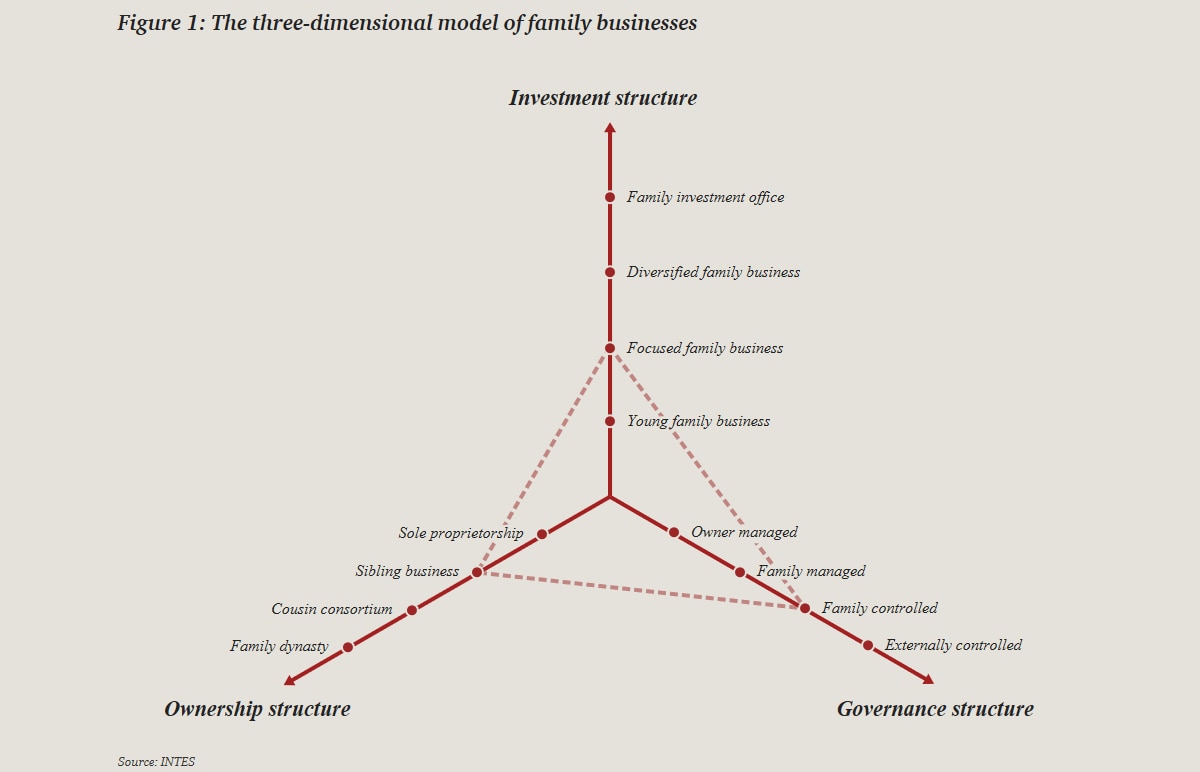Many roads lead to Rome
There are all sorts of ways for someone to enter the business. There is no right or wrong approach, although the general rule of thumb is that the bigger the operation, the more complex preparation for a leadership role will be.
- Top-down: initially the successor sits in on board of directors’ meetings as a guest and observes the business as a spectator. At some point, they become a full member of the board.
- Bottom-up: many aspiring family business leaders start out with a holiday job in the family firm and then do an internship or apprenticeship, or a clerk’s job in some department. From there they work their way up step by step to become a member of the management or the CEO.
- Direct: a successor can also start off right at the top of the management tree, either as sole CEO or co-chief executive working with an external manager.
- Indirect: another option is an interim solution to bridge a period where the heir cannot take over the reins, for example because they are too young or want to be involved on the operational side. In such cases, the company can hire an external CEO on a temporary basis, whose role includes inducting the next generation.
Another alternative: family gets out
The business does not always have to remain in family hands. There are circumstances in which a solution outside the family might be more appropriate, for example if the children do not show any interest, do not have sufficient financial resources, or want to pursue other careers – or when there are no children. There may also be strategic reasons for looking beyond the family, for example if the pressure to internationalise, compete or innovate gets too great for the family to bear on its own. In such cases, there is the option of selling to a third party or a management buyout. This kind of approach brings a breath of fresh air and fresh capital, and depending on the situation may be healthier – both for the family and the business – than an unhappy internal solution.
Experience matters
In most cases, a key issue when handing over the reins is making sure knowledge and experience are transferred. Here a distinction has to be made between knowledge of the industry and management experience. Having industry-specific know-how and a grasp of the relevant technologies may make the job of managing the business easier. In this case the options include studying or doing an apprenticeship or the relevant advanced training.
Transferring leadership experience is more complex. Because leadership is down to experience and can only be learned to a limited extent, it is crucial to share experience with like-minded peers. There are specific clubs (see box) and networking seminars where potential successors can meet people in similar situations. It is easier to discuss the role and all the challenges and insecurities it involves in a forum like this than among close friends or family.
The high art of stepping down
A succession always involves two people: the one who is on their way in, and the one who is on their way out. It is just as difficult a step for the one leaving as for the one coming in. Suddenly, they are faced with unpleasant issues and tough decisions. What are the alternatives? What does our dream candidate want? What do the other candidates want? When should we start the necessary discussions? What financial arrangements need to be made so that my future is secure? To get this conversation going it is well worth bringing in an external moderator or attending a workshop. Trying to find the perfect clone on your own is often destined to failure.







